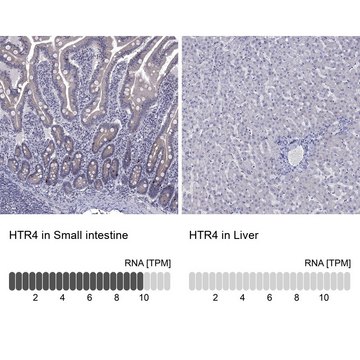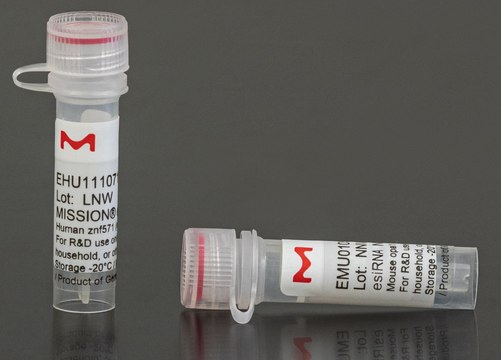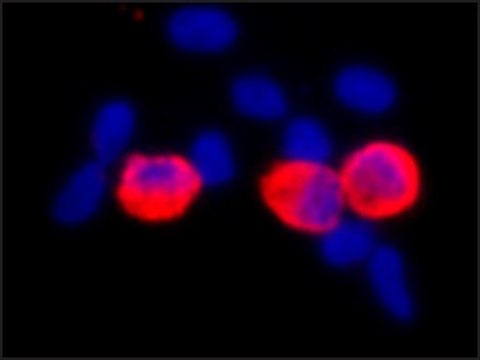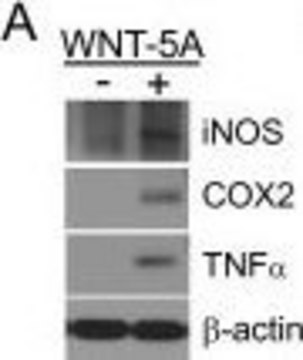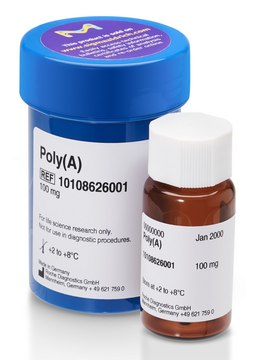S0195
Anti-Serotonin 5-HT4 Receptor antibody produced in rabbit
affinity isolated antibody
Sign Into View Organizational & Contract Pricing
All Photos(1)
About This Item
Recommended Products
biological source
rabbit
Quality Level
conjugate
unconjugated
antibody form
affinity isolated antibody
antibody product type
primary antibodies
clone
polyclonal
species reactivity
human
technique(s)
immunohistochemistry: 5-10 μg/mL using human brain neurons
UniProt accession no.
shipped in
dry ice
storage temp.
−20°C
target post-translational modification
unmodified
Gene Information
human ... HTR4(3360)
mouse ... Htr4(15562)
rat ... Htr4(25324)
General description
Serotonin 5-HT4 receptor (HTR4) gene with five exons spanning ∼1.3 Mb, is mapped to human chromosome 5q32. The protein is majorly found in the central nervous system, mainly in limbic structures. HTR4 protein is also expressed in lower levels in various types of tissues including esophagus, ileum, colon, adrenocortical cells, urinary bladder, and heart. HTR4 belongs to the G protein-coupled receptor (GPCR) superfamily. Anti-Serotonin 5-HT4 receptor specifically recognizes human serotonin 5-HT4 receptor.
Specificity
Anti-Serotonin 5-HT4 Receptor specifically recognizeshuman serotonin 5-HT4 receptor.
Immunogen
synthetic peptide corresponding to the third cytoplasmic loop of human serotonin 5-HT4 receptor, conjugated to KLH. The immunizing peptide has 100% homology with the rat gene and 94% homology with the mouse gene.
Biochem/physiol Actions
Serotonin 5-HT4 receptor (HTR4) plays a vital role in psychomotor function and regulation of dopamine secretion. In the central nervous system, HTR4 aids in learning and memory, depression, anxiety, and feeding behavior. HTR4 gene polymorphism leads to the development of asthma, attention-deficit/hyperactivity disorder (ADHD), mood disorders, and schizophrenia.
Physical form
Solution in phosphate buffered saline containing 0.1% sodium azide.
Disclaimer
Unless otherwise stated in our catalog or other company documentation accompanying the product(s), our products are intended for research use only and are not to be used for any other purpose, which includes but is not limited to, unauthorized commercial uses, in vitro diagnostic uses, ex vivo or in vivo therapeutic uses or any type of consumption or application to humans or animals.
Not finding the right product?
Try our Product Selector Tool.
Storage Class Code
10 - Combustible liquids
WGK
nwg
Flash Point(F)
Not applicable
Flash Point(C)
Not applicable
Regulatory Information
新产品
Choose from one of the most recent versions:
Already Own This Product?
Find documentation for the products that you have recently purchased in the Document Library.
T Ohtsuki et al.
Molecular psychiatry, 7(9), 954-961 (2002-10-26)
Possible irregularities in serotonergic neurotransmission have been suggested as causes of a variety of neuropsychiatric diseases. We performed mutation and association analyses of the HTR4 gene, on 5q32, encoding the serotonin 4 receptor in mood disorders and schizophrenia. Mutation analysis
Jun Li et al.
Neuroscience letters, 401(1-2), 6-9 (2006-03-28)
Attention-deficit/hyperactivity disorder (ADHD) is an important public health problem. Although serotonin is believed to be an important neurotransmitter in the etiology of this disorder, it remains unclear which specific 5-HT receptors are involved in regulating the symptoms of ADHD. Previous
Tae-Hoon Kim et al.
Respirology (Carlton, Vic.), 16(4), 630-638 (2011-03-09)
The neurotransmitter, 5-hydroxytryptamine, acts as an immunomodulator by stimulating the release of inflammatory cytokines and regulating the function of dendritic cells and monocytes. The 5-hydroxytryptamine receptor 4 (HTR4) gene is located in a region previously linked to an increased risk
Emily Hodge et al.
Respiratory research, 14, 77-77 (2013-07-31)
Meta-analyses of genome-wide association studies (GWAS) have identified single nucleotide polymorphisms (SNPs) spanning the 5-hydroxytryptamine receptor 4 (5-HT₄R) gene (HTR4) associated with lung function. The aims of this study were to i) investigate the expression profile of HTR4 in adult
Our team of scientists has experience in all areas of research including Life Science, Material Science, Chemical Synthesis, Chromatography, Analytical and many others.
Contact Technical Service

